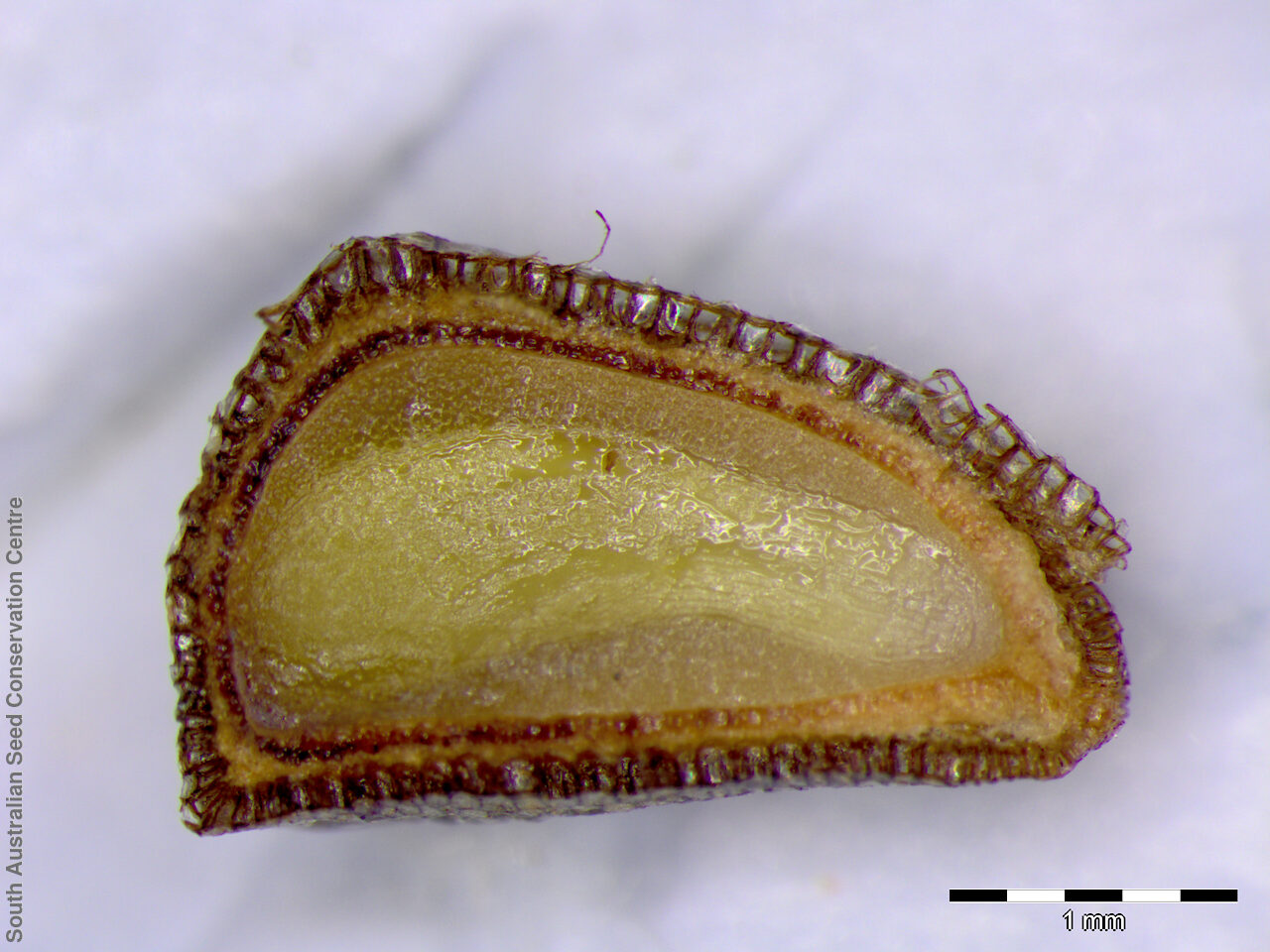











Common names
Wild Rue
Harmal
African Rue
Etymology
Peganum a name used by Theophrastus and is from the Greek 'peganon' meaning rue; from a supposed resemblance of the species to the common rue, Ruta graveolens. Harmala from the Arabic verancular name harmil, alluding to it's medicinal use for thousands of years.
Distribution and status
An introduced species native to the steppes and deserts of the Mediterranean region from Spain, northern Africa and Arabia through southern Russia to Tibet and recorded in the east central region in South Australia. Also found in New South Wales and Victoria. Introduced. Common in South Australia. Uncommon or rare in the other states.
Herbarium regions: Gairdner-Torrens, Flinders Ranges, Eastern, Eyre Peninsula, Northern Lofty, Murray, Southern Lofty, South Eastern, Green Adelaide
NRM regions: Adelaide and Mount Lofty Ranges, Eyre Peninsula, Northern and Yorke, South Australian Arid Lands, South Australian Murray-Darling Basin, South East
AVH map: SA distribution map (external link)
Plant description
Perennial fleshy shrub to 80 cm tall with a long tap root. Leaves to 5 cm long, alternate, 3-sect or divided several times into narrow spreading segments. Inflorescence solitary or on axillary peduncles with large white flowers. Flowering between November and February. Fruits are round brown capsules to 12 mm diameter, surrounded by narrow sepals. Seeds are dark brown wedge-shaped to 3 mm long and 2 mm wide, with a fine reticulated surface. Seed embryo type is spatulate fully developed.
Seed collection and propagation
Collect seeds between January and April. Collect semi-dried and dried capsules, turning brown, which have a hard and dark seed inside. Place the capsules in a tray and leave to dry for 1 to 2 weeks. Then rub the dried capsules with your hand or a rubber bung to dislodge the seeds. Use a sieve to remove the unwanted material. Store the seeds with a desiccant such as dried silica beads or dry rice, in an air tight container in a cool and dry place. Seed viability is usually high. Seeds are non-dormant, viable seed should germinate readily.
| Location | No. of seeds (weight grams) | Number of plants | Date collected | Collection number Collection location | Date stored | % Viability | Storage temperature |
|---|---|---|---|---|---|---|---|
| BGA | 7,000 (17.69 g) | 50+ | 1-Apr-2010 | DJD1821 Eastern | 1-Jun-2010 | 90% | -18°C |
Number of plants: This is the number of plants from which the seeds were collected.
Collection location: The Herbarium of South Australia's region name.
% Viability: Percentage of filled healthy seeds determined by a cut test or x-ray.